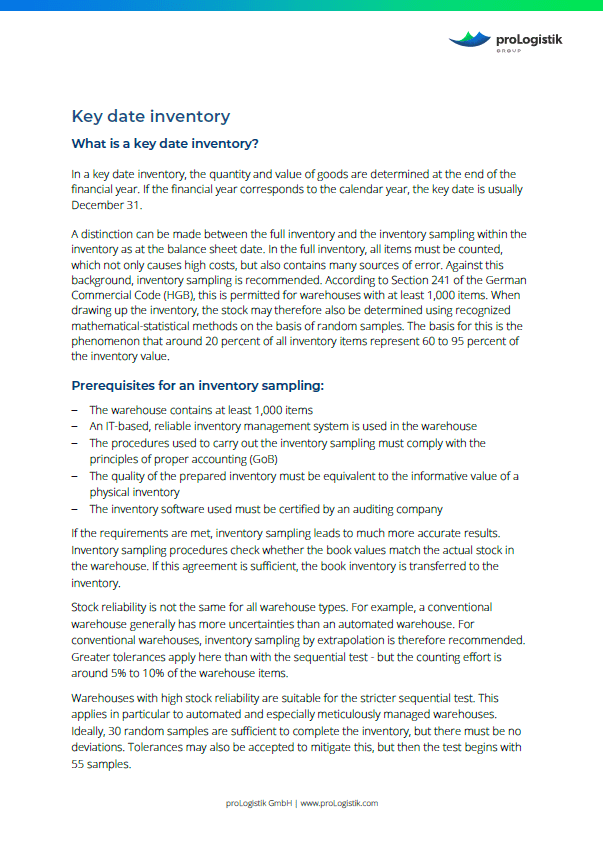What is a key date inventory?
In a key date inventory, the quantity and value of goods are determined at the end of the financial year. If the financial year corresponds to the calendar year, the key date is usually December 31.
A distinction can be made between the full inventory and the inventory sampling within the inventory as at the balance sheet date. In the full inventory, all items must be counted, which not only causes high costs, but also contains many possible sources of error. Against this backdrop, inventory sampling is recommended. According to Section 241 of the German Commercial Code (HGB), this is permitted for warehouses with at least 1,000 items. When drawing up the inventory, the stock may therefore also be determined using recognized mathematical-statistical methods on the basis of random samples. The basis for this is the phenomenon that around 20 percent of all inventory items represent 60 to 95 percent of the inventory value.
Prerequisites for an inventory sampling:
- The warehouse contains at least 1,000 items
- An IT-based, reliable inventory management system is used in the warehouse
- The procedures used to carry out the inventory sampling must comply with the principles of proper accounting
- The quality of the prepared inventory must be equivalent to the informative value of a physical inventory
- The inventory software used must be certified by an auditing company
If the requirements are met, inventory sampling leads to much more accurate results. Inventory sampling procedures check whether the book values match the actual stock in the warehouse. If this agreement is sufficient, the book inventory is transferred to the inventory.
Stock reliability is not the same for all warehouse types. For example, a conventional warehouse generally has more uncertainties than an automated warehouse. For conventional warehouses, inventory sampling by extrapolation is therefore recommended. Greater tolerances apply here than with the sequential test - but the counting effort is around 5% to 10% of the warehouse items.
Warehouses with high stock reliability are suitable for the stricter sequential test. This applies in particular to automated and especially meticulously managed warehouses. Ideally, 30 random samples are sufficient to complete the inventory, but there must be no deviations. Tolerances may also be accepted to mitigate this, but then the test begins with 55 samples.

